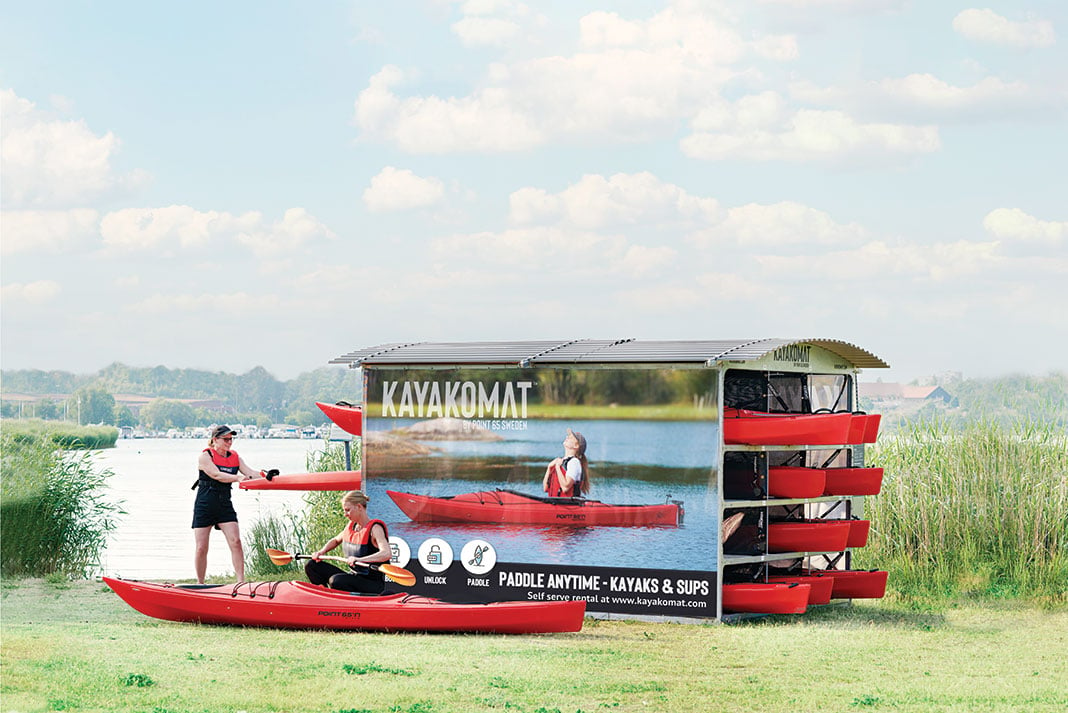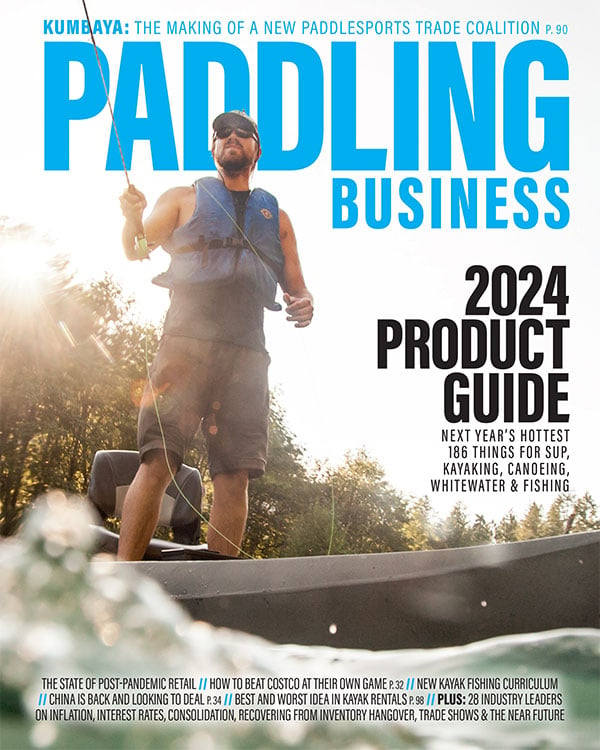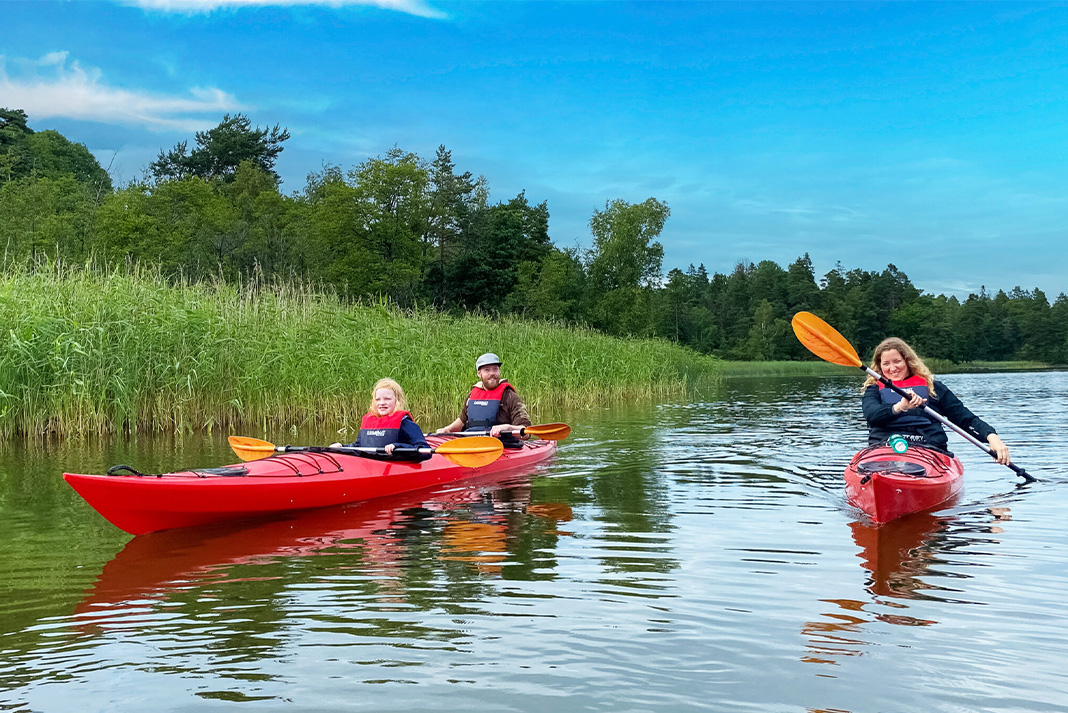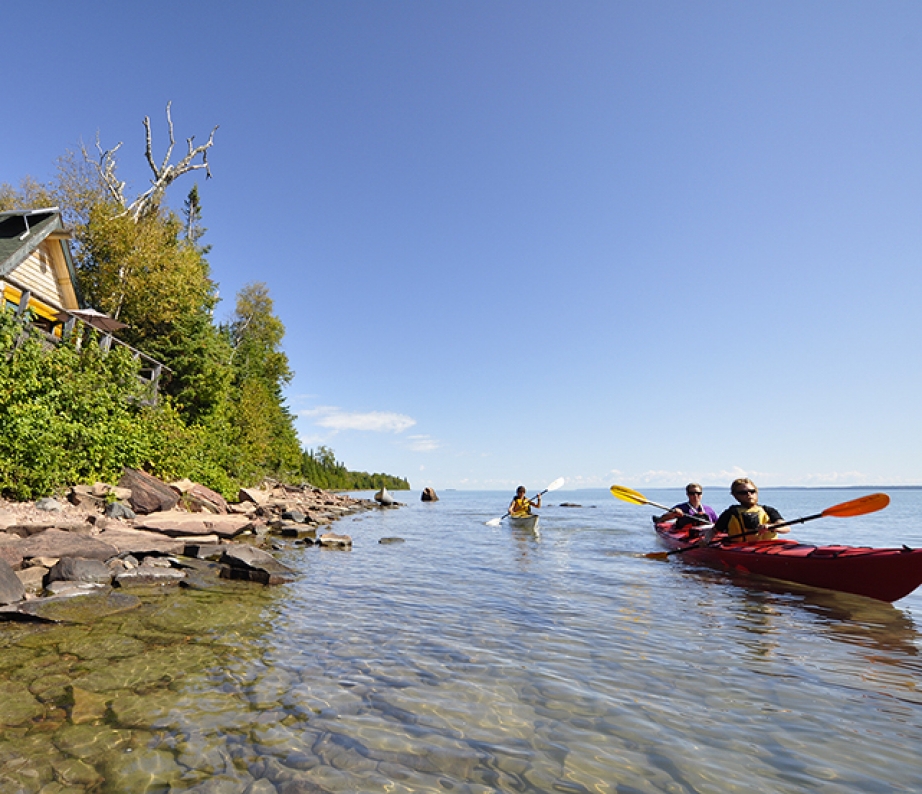KAYAKOMAT, a subsidiary of Swedish kayak maker Point 65, has already dispensed 75,000 kayak and SUP rentals from automated kiosks this year, making it the biggest paddling livery on the planet.
So if you were wondering if the robots might one day take over the paddling business, maybe they already have.
The robots are coming for your rental business
“Having started KAYAKOMAT in 2021, we currently have about 250 stations in operation in eight countries, growing at a pace of three to six stations per week,” says Richard Öhman, Point 65 CEO and founder of KAYAKOMAT. “We expect to pass 600 stations this time next year.” While most of those stations are in Europe, Öhman’s robotic minions established a beachhead in Canada last summer, and if all goes to plan they’ll land on U.S. shores next year.

Automated kayak and SUP rentals are already common in some parts of the United States. Upstate Kayak Rentals has a dozen automated locations in New York. PADL has 50 SUP vending stations across Florida. Rent.Fun has 41 automated kayak rental stands throughout the United States. But while KAYAKOMAT is already the world’s biggest paddlesports rental company, its American competition has a distinct side-hustle vibe. Take Whenever Watersports, whose motto is “Making watersports more accessible, one kiosk at a time.” So far they’re up to two.
How the service works
Still, there’s no denying the appeal of self-serve paddling kiosks. City, state and provincial parks in particular love the idea of providing a new recreational amenity with little to no staff involvement. That’s a big part of the pitch to investors, too. None of the 12 KAYAKOMAT affiliates in Canada owns the prime waterfront land where their kiosks are located. Instead they partner with parks or private campgrounds. Most don’t even pay rent, says Tim Rosadiuk, a Point 65 dealer in Alberta who manages KAYAKOMAT’s Canadian operations.
KAYAKOMAT is unique in that it supplies everything—the kiosks, phone app and technical support, plus boats and gear—to affiliate partners. The company’s Canadian affiliates pay a one-time fee of $6,000 Canadian ($4,500 USD) and purchase the kiosk for $3,600 Canadian ($2,700 USD). Operating costs come to about $15,000 Canadian ($11,300 USD) per year, including access to the smart lock system and smartphone enabled booking app, a quiver of 12 Point 65 kayaks or SUPs, and insurance purchased from a third-party provider.
There’s no line item for labor, of course. The robots handle that, with a little help from the human affiliate, who should plan to spend about four to eight hours a week wiping down kayaks, swabbing the kiosk and dealing with tech-challenged customers on the phone.
Rosadiuk purchases the boats wholesale from Point 65, then sells them to a third-party company that leases them to the affiliates. Affiliates get four brand-new boats from Point 65 each season (they pay shipping), and the used boats are sold into the local market with the proceeds split 50-50 between Rosadiuk and the operator. It’s kind of like credit default swaps, in the sense that nobody needs to understand exactly how it works as long as they’re all making money. And so far, they are. Rosadiuk says affiliates can expect to gross $20,000 to $40,000 Canadian ($15,000–$30,000 USD) per year.
Öhman says U.S. affiliates should expect a similar arrangement, though likely without a leasing company in the middle: An entrance fee of $5,000, monthly fees of $250 for software and $300 for hardware including boats, gear and smart locks, and insurance sold separately.
Self-serve shortcomings
So what’s not to like?
Start with safety, says Teresa Patterson, a kayak guide and livery manager in Fort Worth, Texas. “When we get our insurance, we have to be rescue trained. We have to verify we have the right number and size of life vests, and we have to verify we’re not going to put anybody on the water in questionable conditions,” she says. “All that goes out the window with these kiosks.”
Labor savings and free rent may give automated kiosks a big financial edge, Patterson says, but the humans still have one ace up their sleeves. “They absolutely can undercut us, but we make up for that in service. We’re going to make sure you feel protected and safe and completely catered to.”
That’s one thing the machines can’t do. Yet.

Kayak rental: there’s an app for that. | Feature photo: Kayakomat










Glad to read the counterpoint from Teresa Patterson. The reason that livery guests/clients/customers “feel protected and safe and completely catered to” is that THEY ARE. A rental crate won’t tow an exhausted paddler back to shore, help find those keys lost in a meter of muck, nor will it give you the on-the-spot assessment regarding the combination of weather conditions/paddler fitness and capability/gear selection. I’ll stick to real connections, real experiences, real people.